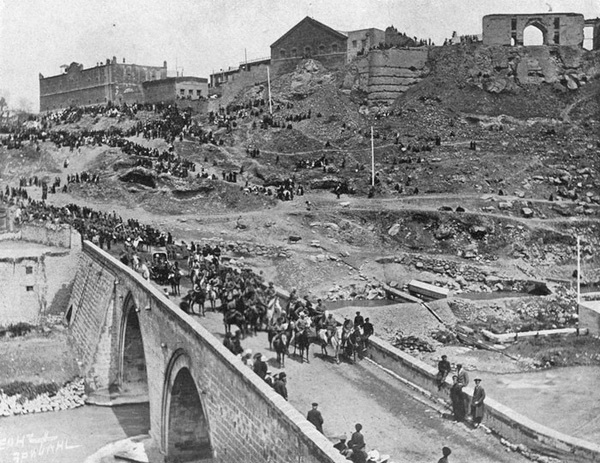(Shortened)
The geographical region was named Great Armenia not because it is “great”, but because it is “greater” than Little Armenia. In fact, no early source confirms the existence of any state named Great Armenia in the history. No archaeological excavation has ever discovered Great Armenia-engraved coins. The coins minted by the Parthian Tigranes II claimed by the Armenians do not confirm him as ruler of Great Armenia either.
Great Armenia is not historical truth, but an infamous “national ideology”, reactionary, religious, terrorist and aggressive “doctrine” aimed at occupying foreign territories for nomadic Armenians, who had never owned their own lands.
Anthropologic, somatological (physical dimensions), craniological (skull size), odontologic (tooth structure), serological (blood group studies) researches prove that the so-called Armenoid race and Armenians are not indigenous in South Caucasus; they immigrated to the Near East later. Archaeological artifacts, including human remains found in the present-day Armenian Republic are clear evidences. The morphological structure of ancient human remains does not match that of the Armenians, who resettled in the region later. The idea is supported by recent findings dated the Bronze and Iron Ages (Bunak V.V., Grande Armenie, M., 1927, p.26).
Researchers point out that the presumed ancestors of modern Armenians started moving from the Balkan Peninsula by the 12th century BC and resettled in the Valley of the Upper Euphrates River (Lake Van area) via Asia Minor. The fact the ancestors of Armenians are not indigenous in this region has long been proved in history (eg.: Дяконов И.М.,Предыстория армянского народа, Ереван, 1968). The work by M.Dyakonov proves with solid linguistic and archaeological sources that the ancestors of the Armenians (if they can really be considered so) are not indigenous in the Valley of the Upper Euphrates River. He returned to this theme later to deepen his research and obtained additional evidence confirming the concept above (И.М.Дьяконов. Малая Азия и Армения около 600 г. до. н.э. и северные походы вавилонеких царей// “Вестник древней истории”, 1981, ?2, с.34-63). I bring to attention of readers some quotes from his article: “Proto-Armenians appeared in the upper basin of the Euphrates River as alien (and, therefore, unsettled ranching) people during the domination of Luwian and Hurro-Urartian civilizations…there is no evidence on autochthonism of Proto-Armenians (p.54-55).” “It is noteworthy that the immigrating Proto-Armenians were a minority compared with local Luwian and Hurrian population.” (p.59)
Mentioned by M.Dyakonov, the indigenous Hurris, who dominated the region, were among the ancestors of the Azerbaijani people. In other words, science is very clear that the Azerbaijanis are indigenous in these lands, including the Valley of the Upper Euphrates River, while the Armenians are alien.
The above-mentioned facts and other researches confirm what “The Father of History” Herodotus wrote in the 5th century BC: Armenians moved to Asia Minor from the west; they are descendants of Phrygians (Геродот.История в девяти книгах. I: 180, 194; III: 93; В: 49, 52; VII: 73).
Yagub Mahmudov
Academician, Honored Scientist,
Director of Institute of History, Member of Parliament











 Inauguration ceremony of President of Azerbaijan Ilham Aliyev was held
Inauguration ceremony of President of Azerbaijan Ilham Aliyev was held Ilham Aliyev wins presidential election with 92.05 percent of votes VIDEO
Ilham Aliyev wins presidential election with 92.05 percent of votes VIDEO President Ilham Aliyev, First Lady Mehriban Aliyeva and family members voted in Khankendi VIDEO
President Ilham Aliyev, First Lady Mehriban Aliyeva and family members voted in Khankendi VIDEO Plenary session of 6th Summit of Conference on Interaction and Confidence Building Measures in Asia gets underway in Astana. President Ilham Aliyev attends the plenary session VIDEO
Plenary session of 6th Summit of Conference on Interaction and Confidence Building Measures in Asia gets underway in Astana. President Ilham Aliyev attends the plenary session VIDEO President Ilham Aliyev was interviewed by Azerbaijani TV channels in Prague VIDEO
President Ilham Aliyev was interviewed by Azerbaijani TV channels in Prague VIDEO














